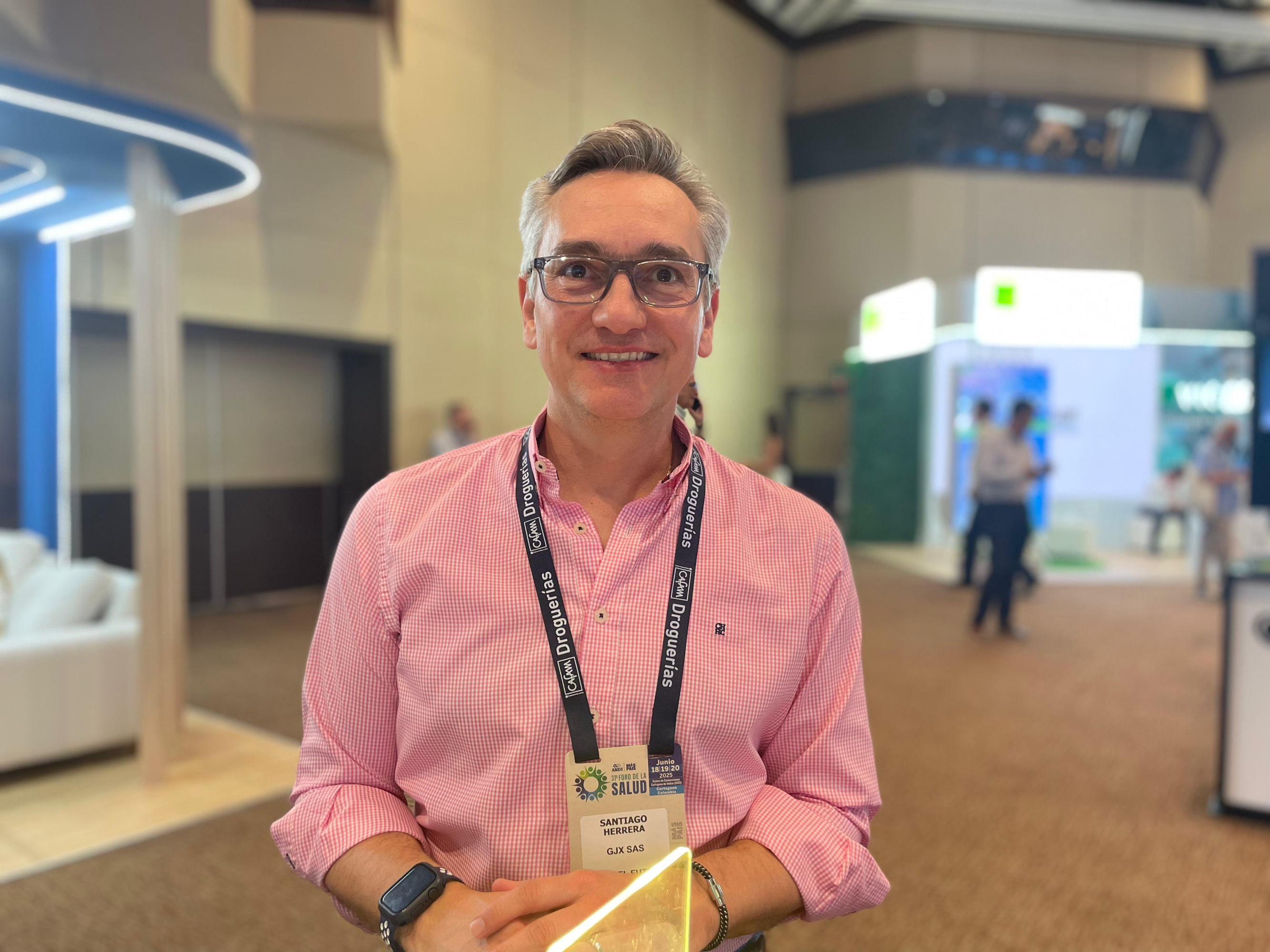Health systems expert: 'I'm not sure that reform will solve the system's current problems.'

The current crisis facing the Colombian healthcare system is one of the central topics of the 31st Andi Health Forum, taking place this week in Cartagena. Although the system has been globally recognized for its coverage and reach for years, several factors, but especially funding, are currently holding the sector up against the odds.
At the meeting, various voices contributed their arguments to the urgent discussion on how to resolve the current crisis. One of those voices present at the forum was Colombian epidemiologist Santiago Herrán Diazgranados, who has been studying and analyzing global health systems for more than two decades and is one of the country's leading experts on health systems.

Workshops are being held at the Andi Health Forum to find solutions to the sector's crisis. Photo: Andi
In an interview with EL TIEMPO, Herrán emphasized that the Colombian insurance model has been one of the most equitable in the world, but warned that the current crisis demands that society make clear decisions about which diseases and populations should be prioritized within the coverage capacity of the Health Benefits Plan. "There is no perfect system, but we must be honest about what we are willing to finance with the available resources," he said.
How do you currently view the Colombian healthcare system? It was highly regarded for years, but is now experiencing a complex crisis… I would say the following: all health systems in the world have opportunities for improvement; none are perfect. But I do highlight something about Colombia: from 1993 to today, we've managed to have nearly 99 percent of the population covered. This progress was even more aggressive in the most disadvantaged populations, where coverage went from 6 percent to nearly 90 percent in rural areas. This narrowed the gap between those of us who have been most favored and those who haven't, allowing people of all socioeconomic levels to access an ICU or high-cost medications. The system has been generous, but that puts us in a dilemma: how far can it finance everything? Because the needs are infinite, but the resources are finite.
Health economics experts insist on seeking efficiency in every peso invested: Is it more useful for prevention, primary, tertiary, or palliative care? Michael Porter proposes inverting the classic financing formula: not asking "what can I do with these resources?" but rather "what health objective do I want to achieve and how much will it cost?" This forces us to make more strategic and conscious decisions.
What can be done to improve real access in areas where there are no high-complexity hospitals? Our system is based on network insurance, which includes public and private institutions. But there are areas where this network falls short, especially at highly complex levels. It's impossible to have first-class hospitals in every municipality. So the key is how to create an adequate network to transport patients and, above all, prevent disease. We also have to focus our efforts on certain regions. This entails difficult decisions, because investing in some areas means disinvesting in others. I saw a successful model in Africa: non-medical professionals were trained to treat the 10 most common diseases in certain communities. We did that in Colombia with the Health Promoters. We need to think of non-traditional strategies for high-incidence diseases like urinary tract infections or pneumonia. Of course, it's disruptive, but it can be effective if the staff is well trained.

Colombian epidemiologist Santiago Herrán Diazgranados. Photo: Edwin Caicedo. EL TIEMPO
Because I'm not sure that a reform will solve the system's current problems. The insurance model solved many problems at the time and has worked for the past 30 years. But current problems require adjustments in specific areas, not necessarily a complete reform. We must be clear that there is an ideal, what should be, and what we can actually do with the available resources. We must strive for the ideal, yes, but be aware of our limitations.
How does the Colombian system compare with others like the Mexican or South African ones, which you have studied? For me, Colombia is probably one of the most equitable in the world. Equitable isn't equal; it means correcting injustices. We give more to those who need it most. Since 2012, the Constitutional Court has equalized the Health Benefits Plan between the subsidized and contributory regime. That's equality. But there's also equity when we provide access to those who can't afford it, financed with resources from all parties. We compensate those who earn less or can't contribute. That's what makes it equitable.

The Andi Health Forum will be held in Cartagena from June 18 to 20. Photo: Andi
This isn't just a Colombian problem. All countries are arguing about where resources will come from, because needs are endless and resources are limited. Today, health is among society's top five priorities, which generates greater demand and spending. We will always be in this vicious cycle. That's why we must be clear as a country and say: these are the diseases we are willing to cover. And accept that the funding problem will never be completely resolved.
Environment and Health Journalist
eltiempo


%3Aformat(jpg)%3Aquality(99)%3Awatermark(f.elconfidencial.com%2Ffile%2Fbae%2Feea%2Ffde%2Fbaeeeafde1b3229287b0c008f7602058.png%2C0%2C275%2C1)%2Ff.elconfidencial.com%2Foriginal%2F77e%2Fc44%2Fa4a%2F77ec44a4a61fee16a5129bd30e72d03b.jpg&w=3840&q=100)
%3Aformat(jpg)%3Aquality(99)%3Awatermark(f.elconfidencial.com%2Ffile%2Fbae%2Feea%2Ffde%2Fbaeeeafde1b3229287b0c008f7602058.png%2C0%2C275%2C1)%2Ff.elconfidencial.com%2Foriginal%2F983%2F0a1%2Ff9e%2F9830a1f9ef266e77abe4e280cc4a0316.jpg&w=3840&q=100)
%3Aformat(jpg)%3Aquality(99)%3Awatermark(f.elconfidencial.com%2Ffile%2Fa73%2Ff85%2Fd17%2Fa73f85d17f0b2300eddff0d114d4ab10.png%2C0%2C275%2C1)%2Ff.elconfidencial.com%2Foriginal%2Ff0a%2F00c%2F114%2Ff0a00c1144c3f4fa1b490d2045d494d7.jpg&w=3840&q=100)
%3Aformat(jpg)%3Aquality(99)%3Awatermark(f.elconfidencial.com%2Ffile%2Fbae%2Feea%2Ffde%2Fbaeeeafde1b3229287b0c008f7602058.png%2C0%2C275%2C1)%2Ff.elconfidencial.com%2Foriginal%2Fc89%2Fc0b%2F92a%2Fc89c0b92aa61a49631f688af3464cb62.jpg&w=3840&q=100)